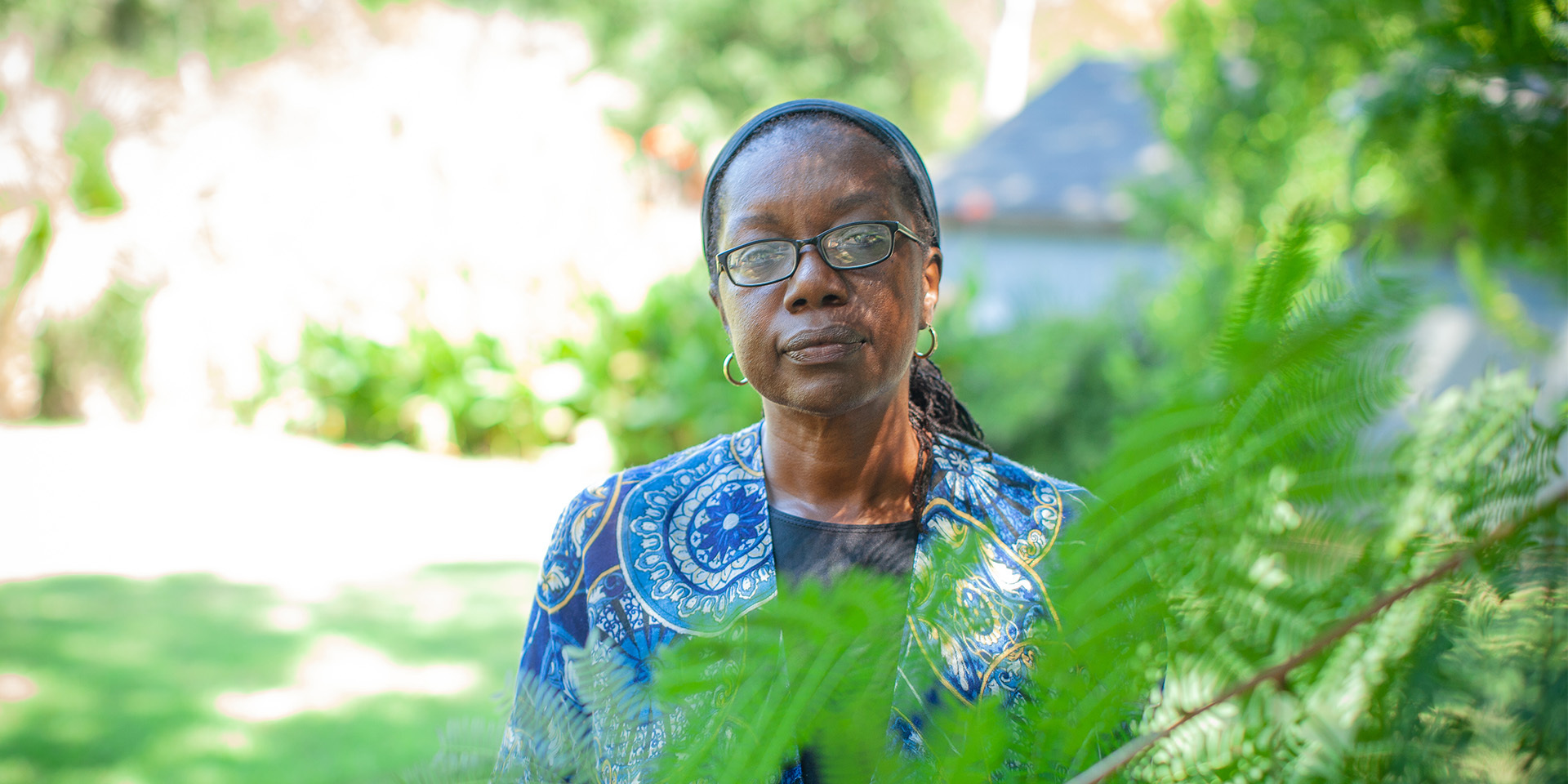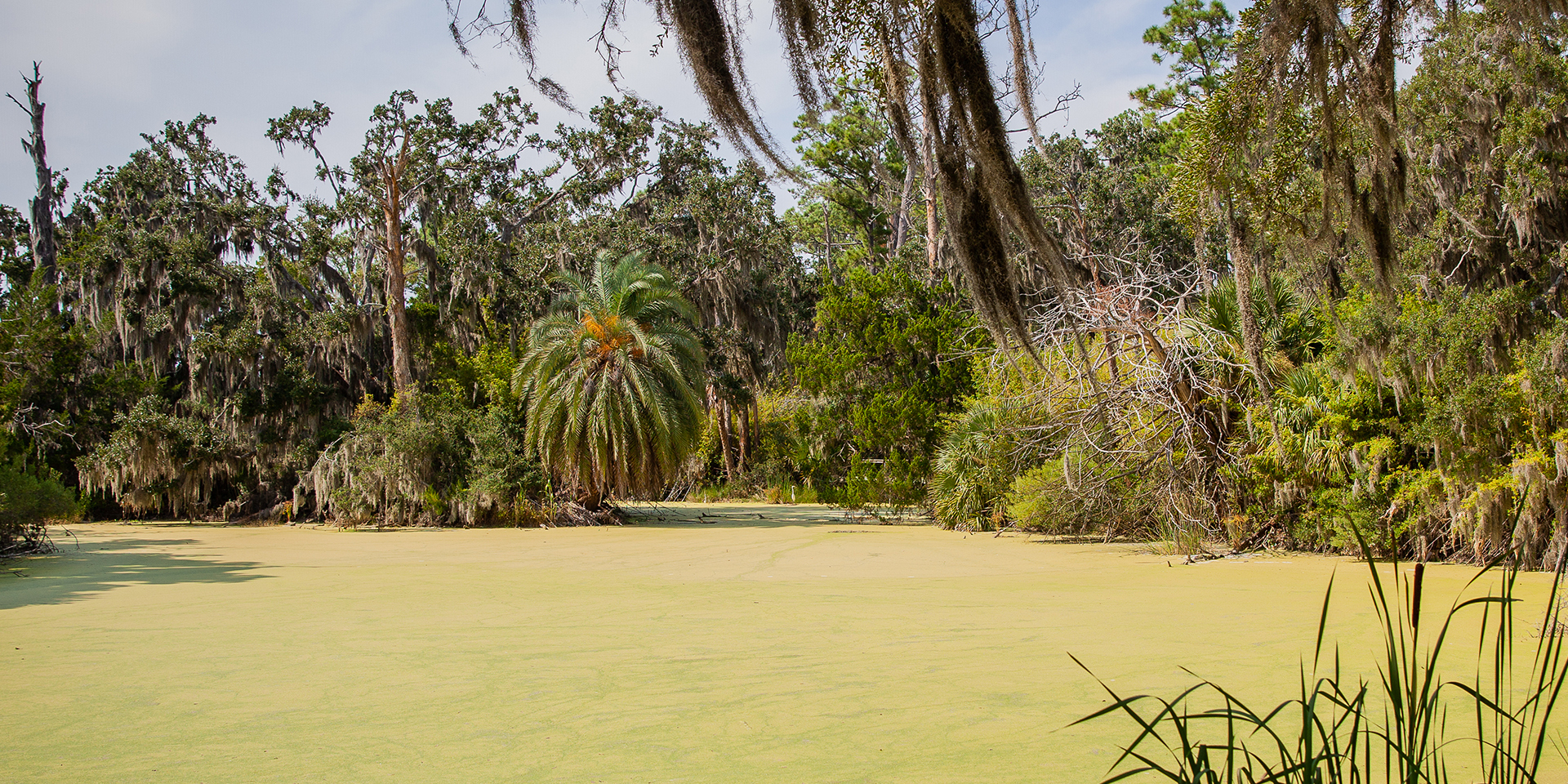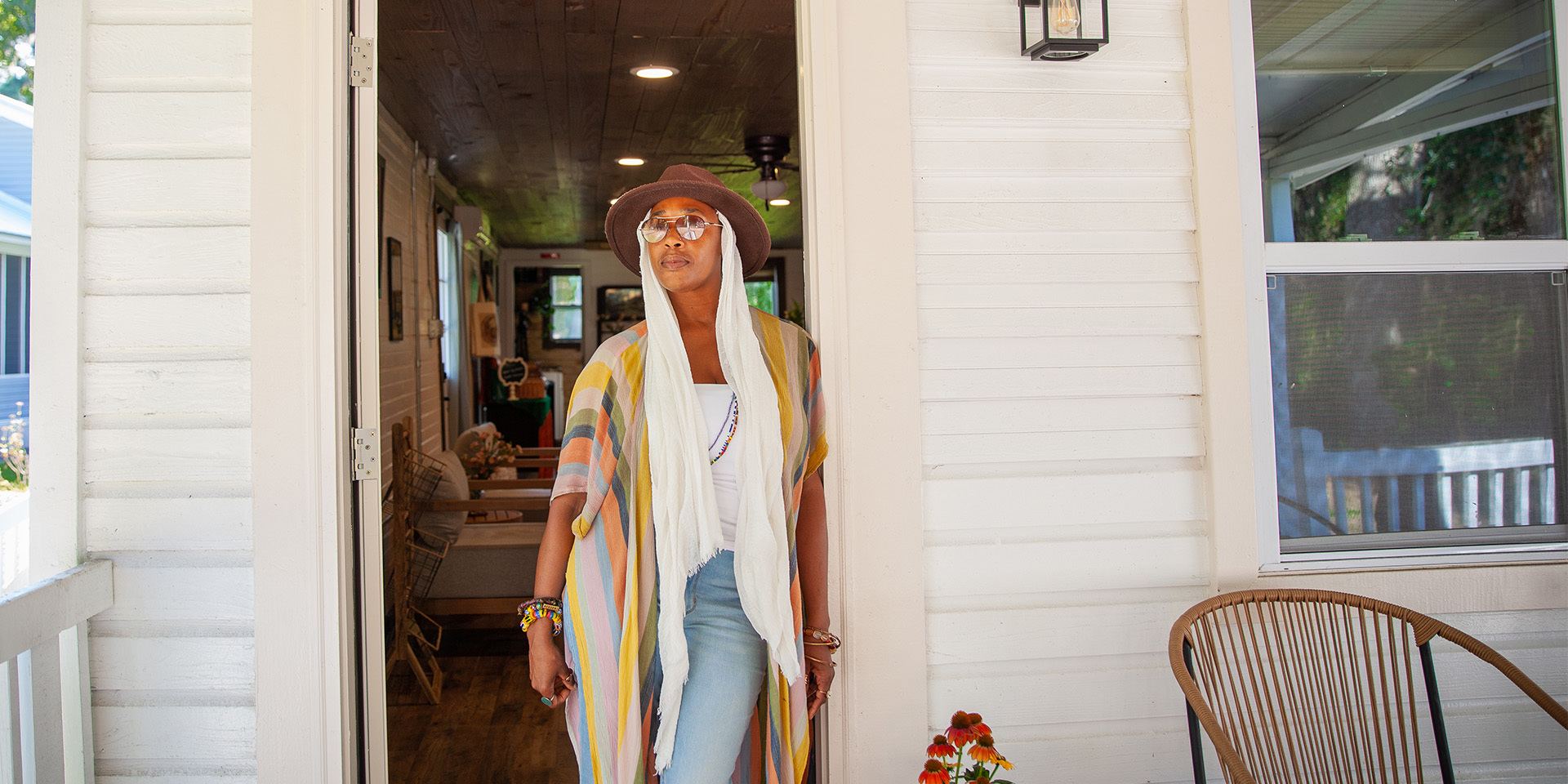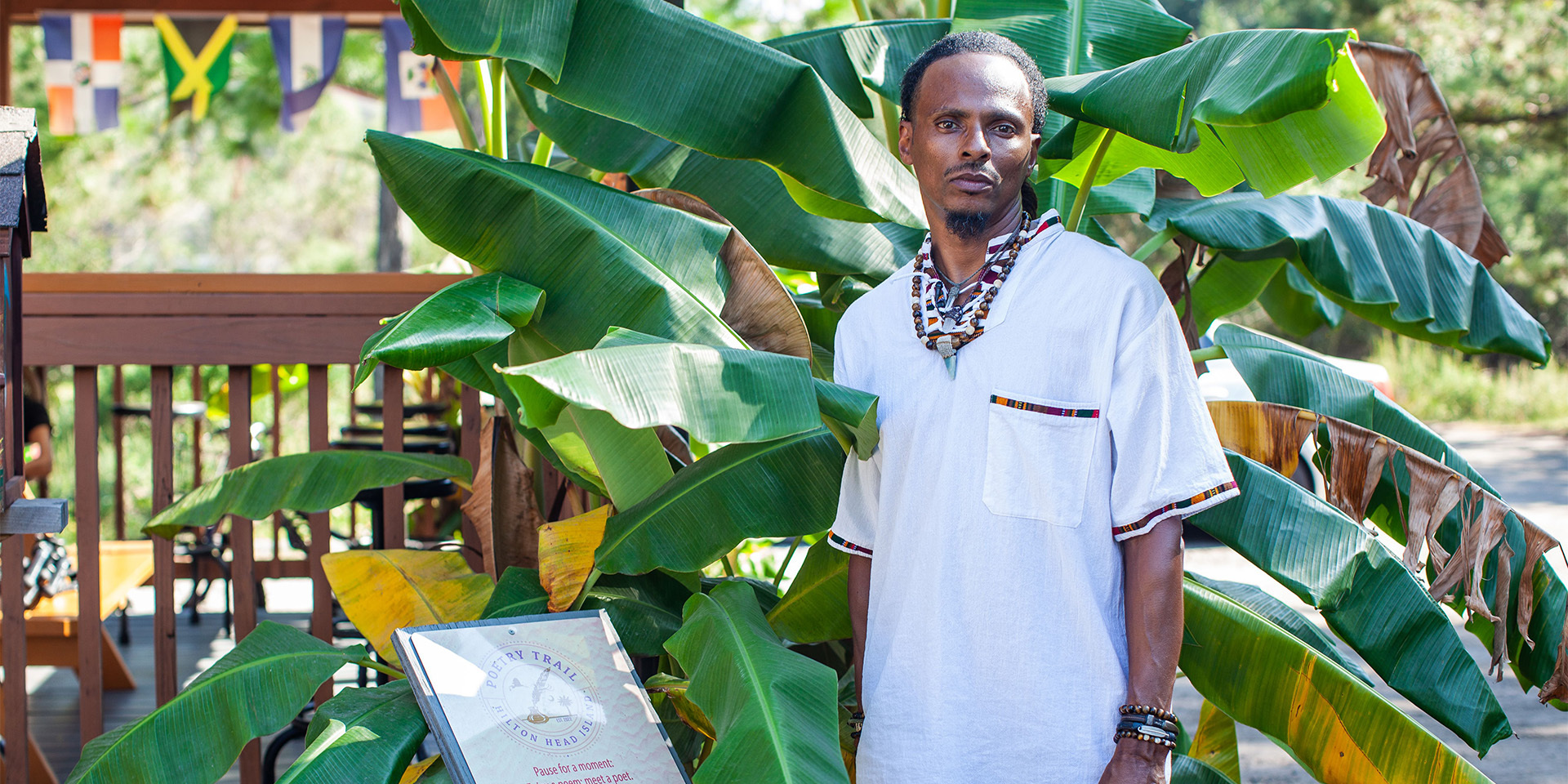Editor’s note: This is the first story in the “Gullah-Geechee vs. Greed” series about the fight to preserve the last of the Black communities on these islands of the southeast Atlantic coast.
From the outside, Bobby Grovner’s house on Sapelo Island, Georgia, is a humble but neat affair, its freshly mowed lawn roughly abutting the gravel drive. Like most homes of the island’s Geechee residents, it is a single-story, World War II-era, ranch-style efficiency with just over 1,000 square feet of living space.
But, as in most of the B movies from that period, there’s a monster lying in wait to destroy the bucolic calm. And like all the best monsters, it’s insidious in its ability to sneak up on the unsuspecting.
A few hundred yards away along Walker Road, the island’s main residential thoroughfare, a very different architectural vibe is on display. Two matching homes, each about the size of Grovner’s ranch, stand a dozen feet in the air on high pilings. An enclosed bridge connects the two.
A little farther on, more construction is underway. More elevated homes, larger than the traditional ones, are in progress atop their foot-thick stilts.
And that, said Grovner, is the problem facing the dwindling dozens of Geechee residents remaining on Sapelo. A zoning ordinance that went into effect in 2023 raised the development limits on the island. Instead of a 1,400-square-foot limit on dwellings, developers can now build up to 3,000 square feet under a single roof. The height limit was also raised, allowing for multistory or very elevated homes.
Aesthetics are the least of Grovner’s issues. The recent construction brings with it concerns over flooding and drainage. Increased runoff adds the dimension of growing coastal erosion. More people also means more traffic, greater demand for water and power, and greater requirement for emergency services — all infrastructure needs that years of neglect have left Sapelo Island wanting.
These new, rustic McMansions affect the ecology and stability of the island culture. But above all, they bring the very real possibility of raising property taxes for the island’s Geechee residents.
And that is when the monster raises its snaky head. Over the decades, tax sales have been the most prevalent method of removing Geechee families from their land.
“Everything from about five or 10 years up to now has been about the same, except for when you come in for taxes and all this kind of stuff,” Grovner said. “Whatever it takes to say, ‘Well, you don’t have enough money to pay tax. We’re raising your tax as well.’ That’s one way to get you away from your land.”
Attorneys for the Southern Poverty Law Center’s Economic Justice litigation team are representing several plaintiffs in a lawsuit targeting the zoning change and the process the McIntosh County administration followed in getting it passed. They are seeking to protect members of this community and another one like it in Hilton Head, South Carolina, from being forced out of their homes to make way for wealthier outsiders.
“There were a number of failures on the part of the McIntosh County Board of Commissioners,” said Miriam Gutman, an SPLC attorney representing the plaintiffs. “This complaint is about recognizing the needs of the descendants that reside on Sapelo Island. The previous hearing that took place (to allow input on the proposed zoning ordinance) did little to accommodate the voices of Hogg Hummock and their input regarding rezoning and the harmful impact that it could have on the historical and cultural integrity of the land.”
Sapelo, located off the Atlantic coast about an hour south of Savannah, is one of the few intact Gullah-Geechee communities whose people derive their name from their predominant native African languages. Like all Gullah-Geechee people, the original residents of Hogg Hummock (also known as Hog Hammock, a bastardization of the original name) are descendants of formerly enslaved people. Grovner is among them. In the waning years of the Civil War, their ancestors either purchased or were granted land that they farmed and developed themselves after their white former enslavers abandoned the plantations in the wake of the Emancipation Proclamation.

Other outposts of surviving Gullah-Geechee culture are sprinkled along the Georgia (primarily Geechee) and Carolina (primarily Gullah) coastal islands. Each community faces its own unique issues as its members strive to keep their culture alive.
In some cases, like South Carolina’s Hilton Head Island, the gate for controlling any development encroachment on the Gullah community was thrown wide open in 1956, when the James F. Byrnes Bridge allowed vehicles — and resort developers — easy access to the island. Even though the Gullah community there and in nearby Beaufort managed to eke out survival despite the onslaught of hotels and golf courses, multiple threats are still on the horizon and in the courts.
A pair of passenger-only ferries provide access to the island only three times each weekday at 8:30 a.m., 3:30 p.m. and 5:30 p.m., but that has not stopped outsiders from seeking to develop property there. Efforts to gain ownership of the land — especially the pristine, 15-foot elevation of the Raccoon Bluff area on the northeastern portion of the island that was home to Geechee families before the 1950s — have been underway for more than half a century.
As in Hilton Head, the fight has led Sapelo residents to seek solutions through both litigation and legislation. Several island residents, with help from the SPLC, filed a lawsuit to throw out the zoning regulations for Sapelo Island and revert to the old standards. That lawsuit is still pending in the courts.
Sapelo Island residents also started a petition to have a vote on whether to throw out the new zoning ordinance. That referendum gained enough signatures to force an election on Oct. 1, 2024. But halfway through the early voting period, with more than 800 votes already cast, a court shut down the election.
That led to a second lawsuit, which argues that the election should have been allowed to remain open. The Supreme Court of Georgia ruled on Aug. 30 in favor of the plaintiffs, saying the lower-court judge should not have halted the election.
‘Something has to be done’
Just 60 miles northeast of Sapelo Island, across the Georgia-South Carolina state line, lies Hilton Head Island.
There are 10 cemeteries on Hilton Head where native islanders, as Gullah-Geechee residents refer to themselves, bury their dead. Only one of those final resting places, a former cemetery for Union soldiers established by a military division, is not located near coastal waters.
“Our people planned those cemeteries close to the water because they came by the sea, and they believed that when they died the water would take their spirits back to Africa,” said 81-year-old Louise Miller Cohen, a Gullah-Geechee storyteller raised in the island’s Squire Pope community.
Several of these historic African American burial grounds now sit behind the towering walls of tony gated residential estates. To lay flowers on the graves of their loved ones, native islanders must now seek approval, presenting their identification at an estate’s security desk.
It’s a slight that illustrates how access, development and an influx of wealth have affected the island, and consequently Gullah residents’ way of life. Miles of once-undeveloped coastline, where for centuries Gullah people drew fruitful bounty from the sea, are now restricted for private access. Beaches that were once Black-owned land are now the sites of multimillion-dollar condominiums and international hotel conglomerates.
Historical sites of worship and community gathering, such as the St. James Baptist Church that was founded in 1886, are being pushed out to make way for the expansion of the town’s airport. And the initial plan, proposed to widen U.S. Highway 278, which replaced the James F. Byrnes Bridge in 1982, threatened to uproot and further encroach on Gullah residents and historical landmarks. That plan has since been pared back due to a lack of funding.
Miller Cohen remembers simpler times, when families lived off the land and saltwater creeks, planting seasonal crops such as tomatoes, okra and butterbeans. They preserved what they needed through canning and jarring, sharing any surplus with family and neighbors. Church services were staggered, so that the island’s five Black churches never competed for parishioners. Every Sunday, they each had a full house.

Back then, there were about 17 Gullah communities on the island, each representing anywhere from a handful of residents to dozens of families. Today Miller Cohen, who operates the nonprofit Gullah Museum of Hilton Head, estimates there are some 71 surviving families.
“When the bridge came to Hilton Head, that’s when things started to change,” she said, referring to the construction of the Byrnes bridge in 1956, which first connected the island to the mainland.
It would take some time, but as the years passed, Miller Cohen began to see a vision of the future — and it disturbed her.
Two- and three-story buildings were cropping up across the island. Developers were swallowing up the open fields where Carolina Marsh Tackies — endangered wild horses descended from those of early Spanish explorers — once grazed. And Gullah families were losing their land, whether due to heirs being unable to prove clear title, tax sales from accrued taxes or land being sold out of the family on the open market, often for less than it was worth.
With the town’s incorporation in 1983, the pace of development accelerated at breakneck speed.
Those decades of high-end development transformed the island into one of the country’s top tourist destinations. But the benefits of its ascent have largely escaped the Gullah community.
The island’s north end, where most historic Gullah communities are located, lacks consistent water, sewage and storm infrastructure. Families that want to develop their land or use a portion for commercial purposes say zoning ordinances have stymied them. They have been unable to economically benefit from the use of their land where outside developers have succeeded.
Many fear that more Gullah communities will disappear or be forced out as the cost of living continues to rise and land grows scarcer.
“I am trying to keep the culture alive,” said Miller Cohen, who runs a free summer camp for local children focused on Gullah-Geechee heritage. “Something has to be done, and someone has to do it.”
Hoping for a reprieve
Back on Sapelo Island, the inside of Grovner’s house is a construction zone. He is in the midst of renovating it for use as a bed-and-breakfast, having pulled it back to the studs. Fresh drywall clads the walls, the familiar worksite mélange of sawdust, latex paint and gypsum dust fighting for domination with the aroma of Hoppin’ John simmering on the kitchen stove.
At the age of 67, Grovner is unique in that he was the first of the island’s permanent residents to be born in a hospital on the mainland in McIntosh County. Before his birth, all the surviving Geechee population were birthed on the island with a midwife, Katie Underwood, aiding their arrival in the world.
“It ain’t many kids around here that she didn’t bring into this Earth,” Grovner said. “It’s like maybe about five or six of us that were born in the hospital around my age and a little after me. Everybody else was born right here on this island. She’s the only midwife I remember over here.”
Over the last few decades, there’s been less of a need for a midwife. In the 1950s, there were about 200 Geechee residents left in Hogg Hummock. By the 1980s, that was down to about 125.
Like the Gullah residents of Hilton Head, the remaining Geechee families on Sapelo have limited economic drivers in their community. Attempts to increase the frequency of ferry access to allow more tourism without opening the island to wholesale development have been unsuccessful.
Limits on commercial development are also a challenge because the bulk of the island is under either state or federal purview as wildlife management areas. Much of the remaining developable property is still tied up in the courts as the original residents fight to prove they are the titleholders of land passed from generation to generation.
Now there are about three dozen of those original residents left on Sapelo. Many have moved away to find work or were forced out after giving up the rights to their property. Others left because the limited access via ferry made life untenable, even if they worked nearby on the mainland.
The island’s vulnerability came into sharp focus last October. A recently constructed landing dock collapsed as residents and visitors departed the community’s Cultural Day. Seven people were killed.
The new structure was only a few years old, replacing a dilapidated landing after residents sued the county in federal court to upgrade infrastructure on the island.
But Grovner said he is staying, no matter what monsters arise in his path.
“There’s a lot of stuff that’s going on in this area here,” Grovner said. “But the thing about it is, they try to be so smart and so slick with it. They do it like undercover. But you know, we challenge s— like this. It doesn’t bother me. I will challenge your ass all day long, you know what I’m saying? Because I am not going to let you take what I got.”
Image at top: Yolawnda Cohen-McKinney is founder of the Da Gullah Geechee Pavilion on South Carolina’s Hilton Head Island. The Gullah community there has endured despite a flood of hotels and other development projects that continue to impact their culture and way of life. (Credit: Myisa Plancq-Graham).






